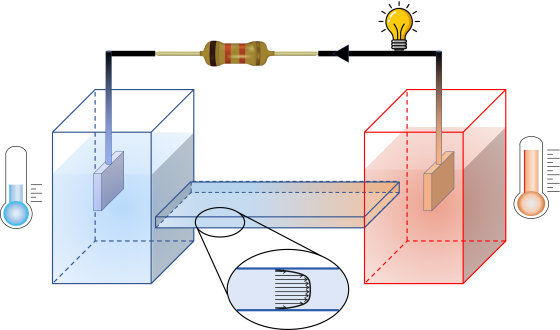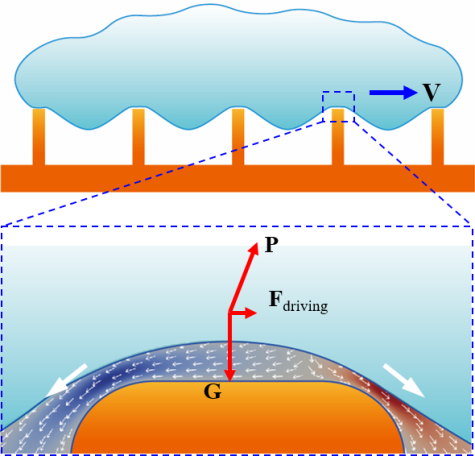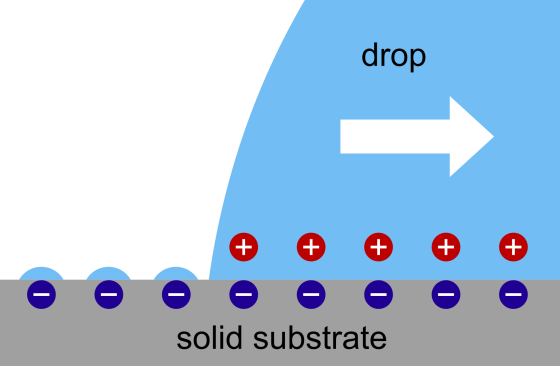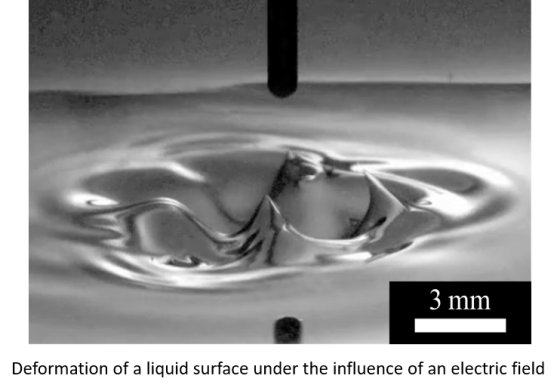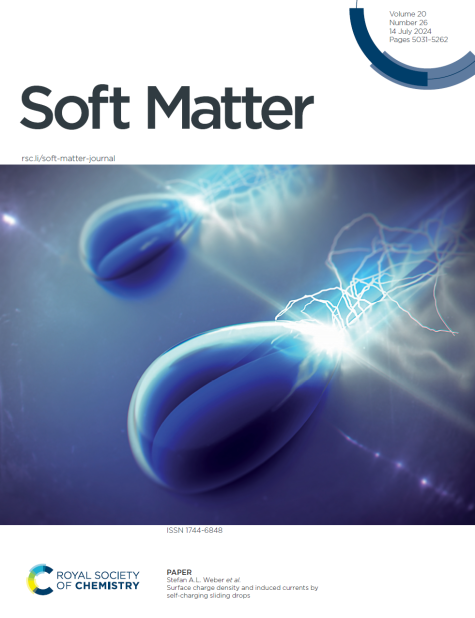Institute for Nano- and Microfluidics
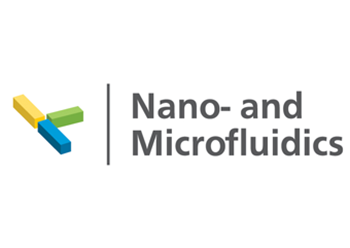
Welcome at the Institute for Nano- and Microfluidics!
We deal with transport phenomena in fluids on the nano- and micrometer scale. We are particularly interested in basic research with the intention of paving the way for novel applications. Our approach is based on a “bottom-up” strategy, i.e. the research is knowledge-driven. Breaking new scientific ground fascinates us, but we keep applications in mind. These can be in different fields such as sustainability, energy conversion, process engineering or (bio)chemical analytics.
Our research covers a broad range of topics and combines experimental, theoretical and numerical approaches. Our fields of work include gas kinetics on the nanoscale, transport processes in electrolyte solutions and at liquid interfaces, wetting phenomena, and separation processes for biomolecules.
In teaching, we offer master's level courses that reflect our research approach. This means that great importance is attached to the understanding of phenomena and processes, but these are also considered in an application context.
If we have aroused your interest, we would be pleased to hear from you!


News
December 09, 2025
Fast charging of nanoporous energy storage devices
Supercapacitors achieve their large capacitance due to the large surface area of porous electrodes, which exhibit myriads of pores with diameters in the nanometer range. The pores are filled with an electrolyte, for example a salt solution. Upon charging, the positive and negative ions move in opposite directions and accumulate in charged, nanometer-thick layers, the electric double layers, on the surfaces of the electrodes. The charging time of supercapacitors is limited only by the transport of ions in the pores of the electrodes. Until now, it was assumed that ions in pores are transported by diffusion, i.e., random molecular motion, and by electromigration, the movement of charged particles due to electric fields. Based on computer simulations and analytical calculations, we have now discovered that convection, i.e., a flow that carries particles along with it, also plays a decisive role in charge transport in pores. The analysis shows a clear influence: if convection is neglected, errors of up to 90 percent occur in the prediction of charging times. The results were published in the Journal Proceedings of the National Academy of Sciences of the United States of America and highlighted on the TU Darmstadt homepage.
December 1, 2025
A Marangoni tractor beam for droplets
In a team with colleagues from the University of Twente we uncovered the counter-intuitive motion of small oil droplets in a channel flow. The liquid inside the channel is water, with a jet of alcohol in the center that flows around a droplet. Due to diffusion, the flow direction and the geometric arrangement, the alcohol content varies along the droplet surface. This in turn creates a surface tension difference between the top and the bottom of the droplet that results in a so-called Marangoni force pulling the droplet in the upstream direction. Applications where this effect could be leveraged range from large scale emulsion or bubble systems in process engineering to analytical chemistry for the collection and handling of small liquid samples. The work was published in the journal Soft Matter and will be featured on the front cover.
August 07, 2025
Breakup of wetting liquid bridges
Liquid bridges are liquid columns connected to solid or liquid domains on their two ends. They are, for example, responsible for the stability of sandcastles. Due to their omnipresence in nature and technological processes, they have been researched quite intensely. Much less is known about liquid bridges that are in contact with a solid surface over their entire length. Such structures can occur when a drop on a surface breaks up. The drop breakup is then connected to the breakup dynamics of the liquid bridge. We have characterized this process in a regime governed by viscous forces and found that dissipation at the moving three-phase contact line plays a key role. The results were recently published in the Journal of Fluid Mechanics.
June 11, 2025
Boosting thermoelectric energy harvesting
Almost everything that happens in this world relies on converting low-entropy energy into heat, which is lost to the environment. Tapping only a small fraction of this heat and converting it to electricity could pave the way towards new sources of energy. About 10 years ago, we showed that when a liquid electrolyte (such as water with added salt) is confined in a nanochannel to which a temperature gradient is applied, the generated voltage can be much higher than for a bulk electrolyte. We have recently extended this analysis to specific channels with walls along which the liquid is slipping instead of sticking to it, characteristic for special materials such as graphene. Our results indicate that in specific situations, the thermally induced flow field massively augments the thermoelectric response by the system. For example, the thermoelectric power can increase by a factor of more than 200. The results were published in the journal Physical Review Fluids.
April 28, 2025
Spontaneous symmetry breaking as a motor for Leidenfrost drops
Almost everyone is familiar with the Leidenfrost effect: a drop of water on a hotplate does not touch the surface, but is held at a distance by a thin film of steam, which gives the drop a high degree of mobility. However, the movement of the drop on the hotplate is undirected and erratic. About two decades ago, it was discovered that a Leidenfrost drop moves in a directional and controlled manner on a surface with the structure of a ratchet. The reason is that the asymmetry of the ratchet ensures that the vapor below the drop escapes in a preferred direction, which propels the drop. In a co-operation with Cunjing Lv and his group, a professor at Tsinghua University in China and a former postdoc of our group, we found a similar drop motion on completely symmetric surface structures, e.g., on metal surfaces with parallel grooves. Our theoretical model explains this effect: Once set in motion, the liquid surface near the hot metal surface is asymmetrically deformed and thus provides the permanent drive for the drop. In this case, it is not the solid surface but the liquid surface that forms the ratchet. The results were published in the journal Science Advances. In a more general context, this phenomenon is known as spontaneous symmetry breaking: An initially symmetric system dynamically evolves into a state in which the symmetry is broken. The principle is so general that the findings from the experiments with Leidenfrost drop could be used to develop new concepts for transporting liquids on the millimeter or micrometer scale.
April 4, 2025
Impacting drops do not splash when they are charged
Drops hitting surfaces at high velocity often splash and eject smaller droplets. This everyday phenomenon can cause challenges in technical applications like surface coating or printing. In a team with colleagues from China and Switzerland, we have shown that a small electric drop charge can keep them from splashing. Charges in the drop are electrostatically attracted to the surface and stabilize the drop. Our theoretical model accurately predicts this behavior. The work has been highlighted in the American Physical Society’s Physics Magazine and published in Physical Review Letters, marked as Editors’ Suggestion.

March 7, 2025
New group member: Merete Seyfried
Recently, Merete Seyfried joined our group as a PhD student. She will study thermoelectric energy conversion in electrolyte-filled nanochannels.
Welcome Merete!
February 3, 2025
Review article on liquid slide electrification
When a drop slides along a solid surface, it often leaves behind charge and accumulates the countercharge. This ubiquitous phenomenon challenges accepted theories of dynamic wetting. In cooperation with partners from the Max Planck Institute for Polymer Research and the University of Stuttgart, we have recently published a review article on liquid slide electrification in the journal Soft Matter. The article not only reviews the physical mechanisms underlying slide electrification and the consequences of this phenomenon, it also highlights open questions and suggests directions for future research in this field.
October 21, 2024
Electrophoresis of uncharged particles
Electrophoresis is one of the most important separation techniques in (bio)chemical analytics. It relies on the motion of charged molecules or particles that are suspended in a liquid under application of an electric field. We have shown that if the material of the suspended particle has a very high dielectric permittivity and if a charge-asymmetric electrolyte is considered (for example, a monovalent cation in combination with a multivalent anion), it will move in an applied electric field even if it bears no charge. Using the same ideas, we have shown that an electroosmotic flow through a channel with highly polarizable walls is generated even if there is no net charge at the channel walls. The corresponding flow velocities are high, which is why the effect could be utilized for pumping through nanochannels. The results were published in the Journal of Fluid Mechanics.
September 9, 2024
Lisa Bauer wins best paper award at ICTAM 2024
Recently, Lisa won the best paper award at the 26th International Congress of Theoretical and Applied Mechanics in the category fluid mechanics. The ICTAM conference series is probably the most important conference series in the field of classical mechanics worldwide, being held every four years. Without any doubt, winning the best paper award at such a conference is a great achievement.
Congratulations Lisa!
September 6, 2024
New lecture: Electrokinetics and Electrohydrodynamics
Beginning with the winter term 2024/2024, we offer a new M.Sc. course entitled “Electrokinetics and Electrohydrodynamics”. The aim of the lecture is to convey important basic knowledge in the context of the growing importance of electrical energy conversion systems in Mechanical Engineering. In many of these systems, liquids (especially electrolytes) are used which are affected by electric fields. The transport phenomena in such systems significantly determine their performance characteristics. In this new lecture, corresponding theoretical concepts based on the physics of interactions between fluid mechanics and electrostatics are covered.
July 17, 2024
Vibrations reduce the surface tension of liquids
If a liquid volume is vibrated with sufficient amplitude, capillary waves emerge on its surface, termed Faraday waves. With increasing excitation amplitude, these waves become more and more chaotic. Interestingly, a liquid volume with chaotic Faraday waves behaves as if it has a reduced surface tension, which we have shown using a combination of experiments and theoretical models. In this way, we have been able to map a complex time-dependent system to a much simpler system, i.e., a steady-state capillary surface. This work was recently published in Physical Review Letters and has been highlighted on the homepage of TU Darmstadt.
July 7, 2024
Our work on the cover of Soft Matter
In a team with colleagues from the University of Stuttgart and the Max Planck Institute for Polymer Research we studied the surface charges left behind by sliding water drops. We developed a measuring method based on image charge detection which helped us corroborate our theoretical understanding of the charge separation mechanism. The work is featured on the cover of the journal Soft Matter.
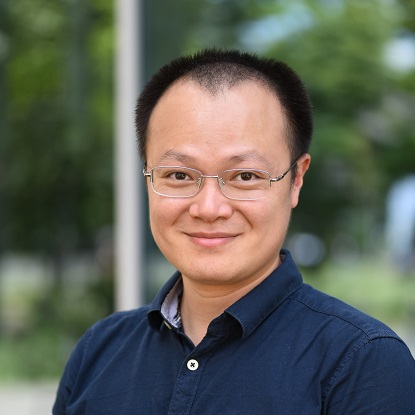
July 1, 2024
New group member: Zhichao Deng
Recently Zhichao Deng joined our group as a postdoctoral researcher. He will experimentally investigate light-induced flow patterns.
Welcome Zhichao!















